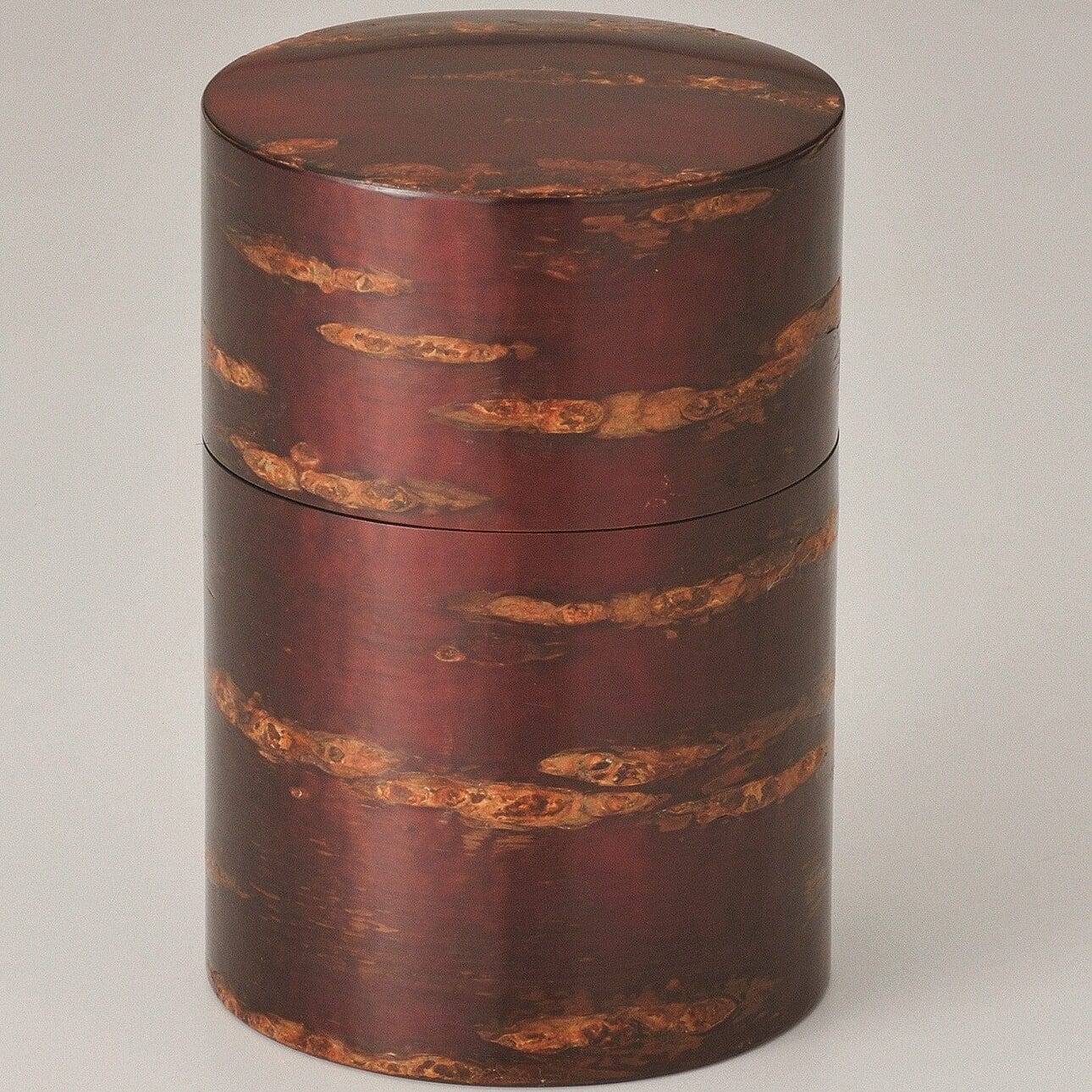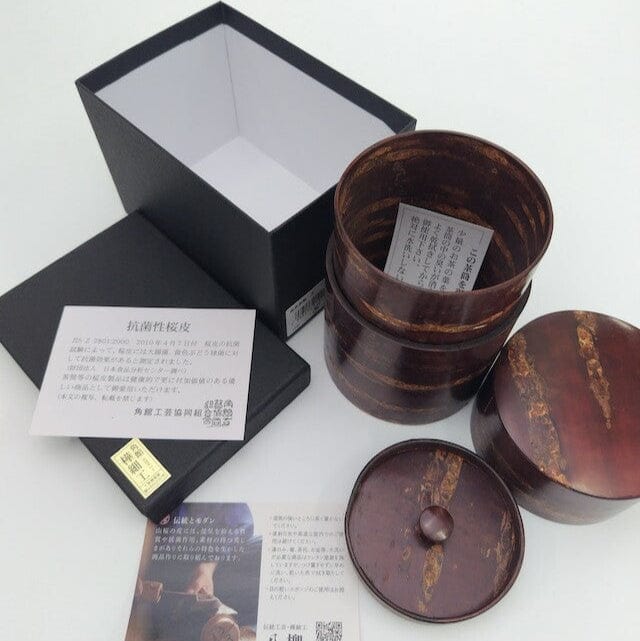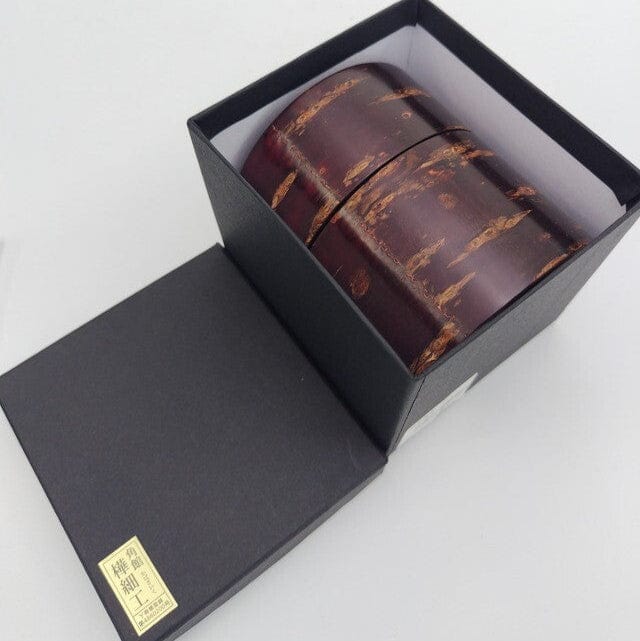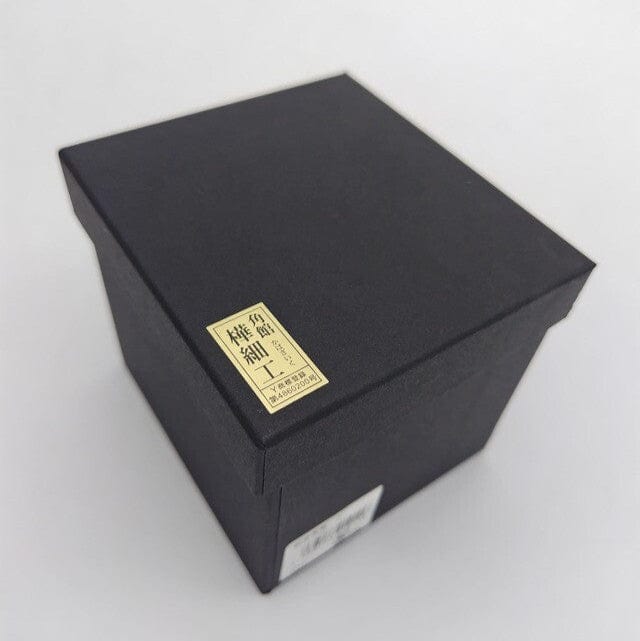



Handmade Kabazaiku Birch Bark Tea Canister
Fast & Secure Delivery from Japan to your Door [Shipping Policy]
Shop Safely with Encrypted Checkout and Verified Gateways.
Pairs well with

Handmade Kabazaiku Birch Bark Tea Canister
Nature Preserved – Handmade Kabazaiku Birch Bark Tea Canister
This Kabazaiku Birch Bark Tea Canister (Plain Leather) is a product of centuries-old craftsmanship from Akita Prefecture, Japan. Created entirely from thinly shaved bark of the yamazakura (wild mountain cherry tree), the container is not only visually striking but designed to naturally regulate humidity—keeping tea leaves or coffee beans in an ideal environment for extended freshness.
The “plain leather” surface—scraped, polished, and assembled by hand—honors the natural grain and character of the bark, making each piece one-of-a-kind. No two canisters are alike, and over time, the finish deepens in richness and luster, gaining patina and personality with daily use.
Lightweight yet durable, this 5.29 oz (150g canister measures approximately 3.3 inches in diameter × 4.7 inches in height (8.3 cm × 12 cm) and includes a matching inner lid for additional airtight sealing. It is suitable for loose-leaf tea, ground coffee, herbs, or small items you want to preserve in a low-humidity, sealed environment.
Why It Stands Out
-
Authentic Kabazaiku Craft: A rare and traditional Japanese woodworking method passed down for over 200 years
-
Natural Humidity Control: Wild cherry bark stabilizes moisture inside the canister—ideal for preserving delicate flavors
-
Aging Beauty: Color and sheen evolve with time and handling
-
Eco-Conscious Elegance: Made from sustainably harvested bark without harming the tree
Product Information
Care instructions
FAQs
All you need to know about Tokoname Ware.
What is Tokoname ware, and why is it so special?
Tokoname ware (常滑焼, Tokoname-yaki) is a traditional form of Japanese pottery that originates from Tokoname City in Aichi Prefecture, one of the Six Ancient Kilns of Japan. With over 900 years of history, it is celebrated for its distinctive use of iron-rich red clay, which is often left unglazed to allow the clay’s natural beauty to shine. This unglazed surface develops a soft sheen and character with age and use, especially when used with tea. Tokoname ware is renowned for its balance of rustic charm, elegant simplicity, and everyday functionality, making it both a collector’s favorite and a staple of modern Japanese homes.
Why are Tokoname teapots (kyūsu) especially valued by tea lovers?
Tokoname’s side-handled teapots, or kyūsu, are highly prized in Japanese tea culture for their superb heat retention, smooth pour, and the unique way the unglazed clay enhances the flavor of green tea—particularly sencha and gyokuro. The clay subtly absorbs tea oils over time, enriching the aroma and depth of future brews. Many Tokoname teapots also feature built-in ceramic mesh filters, which allow for a clean, refined pour without metal interference. These qualities, paired with minimalist design and ergonomic handling, make Tokoname teapots a must-have for serious tea enthusiasts.
Is Tokoname ware always red? Are there other styles or finishes?
While Tokoname ware is most famously associated with its iconic reddish-brown clay, not all pieces are the same. The region’s artisans also produce wares with black, gray, or ash-glazed finishes, depending on the firing techniques, clay blends, and whether they use oxidation or reduction kilns. Some artists incorporate modern design sensibilities, experimenting with glazes and forms, while others preserve traditional aesthetics. Regardless of style, the unifying theme is a commitment to natural textures, balanced forms, and the philosophy of wabi-sabi—the beauty of imperfection and impermanence.
Can Tokoname ware be used daily, or is it mostly decorative?
Tokoname ware is not only beautiful—it’s also highly functional and durable, intended for everyday use. Items like teapots, cups, planters, and incense holders are made to be used regularly. The clay’s natural heat resistance and strength make it ideal for repeated brewing and handling. That said, as with all artisanal ceramics, a little care goes a long way. Avoid using Tokoname ware in microwaves or dishwashers (especially unglazed pieces), and hand wash with warm water only. With proper care, these pieces can last a lifetime and become even more beautiful with age.
How do I know if a piece is authentic Tokoname ware?
Authentic Tokoname ware is typically handcrafted in Tokoname City by artisans who are part of long-established studios or kilns. Many genuine pieces bear a maker’s seal or signature, often engraved or stamped on the base. You may also find regional certifications or documentation when purchasing from reputable sources. Look for details that reflect handcraftsmanship—subtle variations in glaze, slight asymmetry, or a tactile surface. Buying from trusted retailers or directly from workshops ensures authenticity and helps support the preservation of Tokoname’s cultural heritage.

